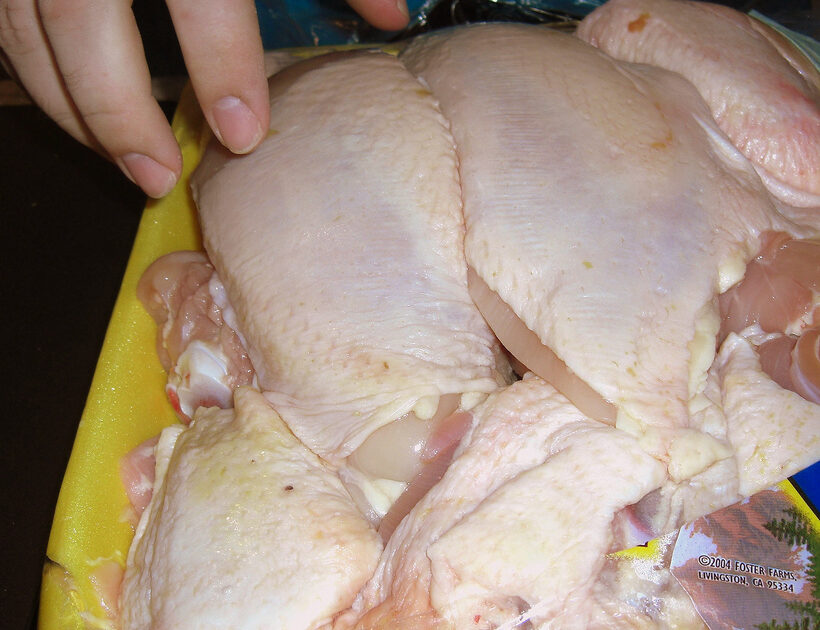Air Chilled Chicken Vs. Water Chilled Chicken: What’s the Difference?

How does your chicken chill out? Does it kick back on its own and hang out in a series of refrigerated chambers? Or does it hit the ice bath and submerge itself with hundreds of fellow fowl? It’s not a matter of introversion vs. extroversion. You’ve probably seen air-chilled chicken in health food stores touted as a healthier, safer alternative to water-chilled chicken.
But what’s the difference?
Water-chilled chicken accounts for the vast majority of chicken products sold in the United States. After being slaughtered, the chickens are quickly cooled down all together in an immense tub of ice-cold, chlorinated water. This conventional method is quick and efficient, however there are some drawbacks.
First of all, it takes a huge amount of fresh water to chill down the chickens – not a great strategy when so much of the country (and the world) is in need of fresh water. While bobbing in the vat of cold water, the chickens invariable absorb some of this liquid. In fact, the added moisture accounts for 2-12 percent of the chicken’s total weight. Since chicken products are sold per pound, this means that you are paying extra for this added water. This also dilutes the natural flavor of the chicken. When you see water at the bottom of pre-packaged chicken, it’s not juices – it’s the communal bath water.
Finally, if any of the chickens in the big communal bath are infected with bacteria, the water makes it easy for all the birds to catch the pathogens and then pass them on to your dinner table. Most of the chicken you have eaten throughout your life has been water-chilled.
Air-chilled chicken is the preferred process in many other countries. This method is slower and less efficient, and these chickens will cost more at the store. However there are many benefits. Once slaughtered, the chickens are cooled down with cold air. They are individually hung and passed through a series of refrigerated chambers over a period of several hours, which cools them down slowly and on an independent basis.
While air-chilled chickens are still sprayed with a chlorine mist, they are not submerged in it. The slower chilling process is more effective at tenderizing, and no water dilution means more natural chicken flavors and juices for you. Air-chilled chicken features a crispier skin after cooking. There’s no added water in the bird to pay for, and the chickens cook more quickly and yield higher amounts of meat. This method creates far less water waste, and the individually chilling process inhibits the spread of bacteria from chicken to chicken.
Another bonus is that air-chilled chickens generally come from smaller family farms and are natural, free-range, and humanely raised. They may also be free from antibiotics and hormones.
Which type of chicken is right for your family? Try them both and see for yourself.
Farms like Mary’s Family Farms in California sell air chilled chicken, which you can also find at Whole Foods and other health food stores. As droughts ravage many parts of the country and water prices are increasing, many farmers are considering the air chilled option as a sensible alternative. It’s likely that we will see more air chilled chicken (with cheaper prices) in the near future.
Resources:
http://www.ars.usda.gov/is/ar/archive/apr08/chicken0408.htm?pf=1
http://articles.sun-sentinel.com/2008-03-27/features/0803250428_1_chicken-air-water
http://www.sfgate.com/food/article/Chicken-lovers-go-for-the-big-chill-3168924.php
Related on Organic Authority
Antibiotic Resistance: Ongoing Salmonella Outbreak Linked to Foster Farms Chicken
Another Reason to Never Feed Chicken Nuggets to Children
What if Restaurants Spoke Honestly About Where Most Chickens Come From? [Video]
Image: OctopusHat

